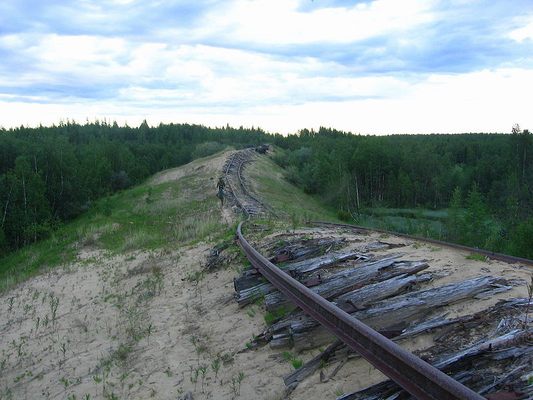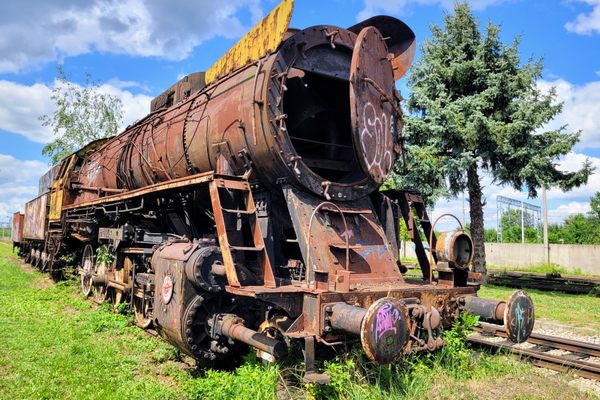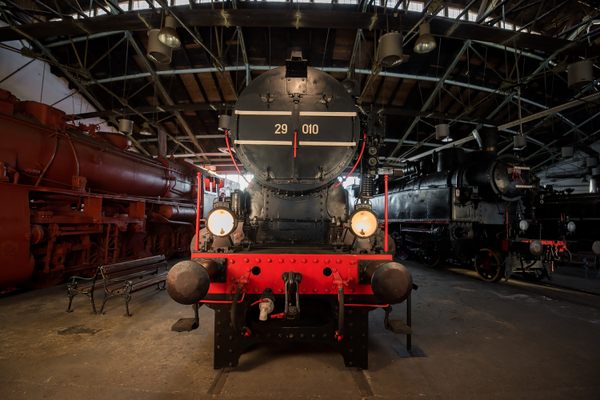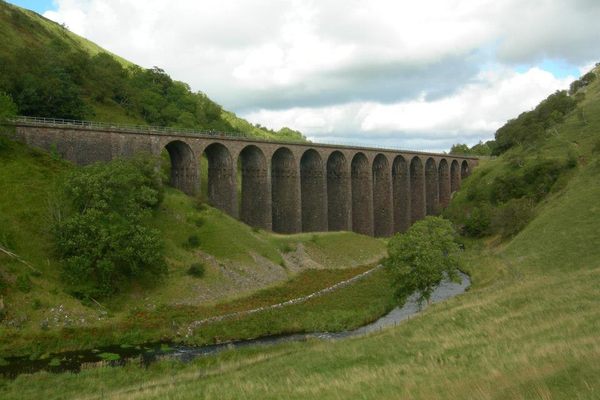About
Joseph Stalin was not a man prone to small, normal-size plans. One of his most audacious schemes involved conquering the natural world itself. He called it his "Great Plan for the Transformation of Nature." The lynchpin of this endeavor was a doomed railway cutting through the heart of the Arctic, built by prisoners of the Soviet Gulag system.
Stalin conceived of an 806-mile-long rail line to run between the Siberian cities Igarka and Salekhard. Between the years 1947 to 1953, political prisoners were tasked with turning two separate projects into one massive bad idea. Working from the banks on the River Ob prisoners constructing the 501 Railroad's struggled to unite their project with that of a separate team of prisoners who were actively dying as they laid ties and rails on their 503 Railroad. On either side of the tracks, wooden barracks (also built by the very prisoners they once housed) can still be seen crumbling into the low brush of the tundra. As the years wore on, progress was made with ever increased sluggishness. Supervisors also started to realize that demand waiting on the other side for the completed railroad verged on nonexistent.
When word reached the camps of Stalin's death in 1953, all work on the tyrant's insane pet project was put to an end, leaving the railway a simple straight line through the sparsely populated Arctic.
To this day, the purpose of Stalin's project remains dubious. Outwardly, the purpose was said to be one of transporting nickel between the two cities' Arctic deep-water ports. Yet more likely, it seems the true idea behind Stalin's railroad lay in creating pointless work for a large population of politically threatening individuals in order to decimate their numbers, all disguised as "serving the nation." At no time in history did this massive stretch of rail connect to the rest of the Russian railway system, nor did it transport a single rail car — teeming with nickel or otherwise.
No accurate record of prisoners' death or injury was kept, meaning there is no way of knowing this impotent railway's human cost. Over time, its official name, the Salekhard-Igarka Railway, has been eclipsed by the more succinct moniker "Death Road."
Related Tags
Published
March 14, 2016
















